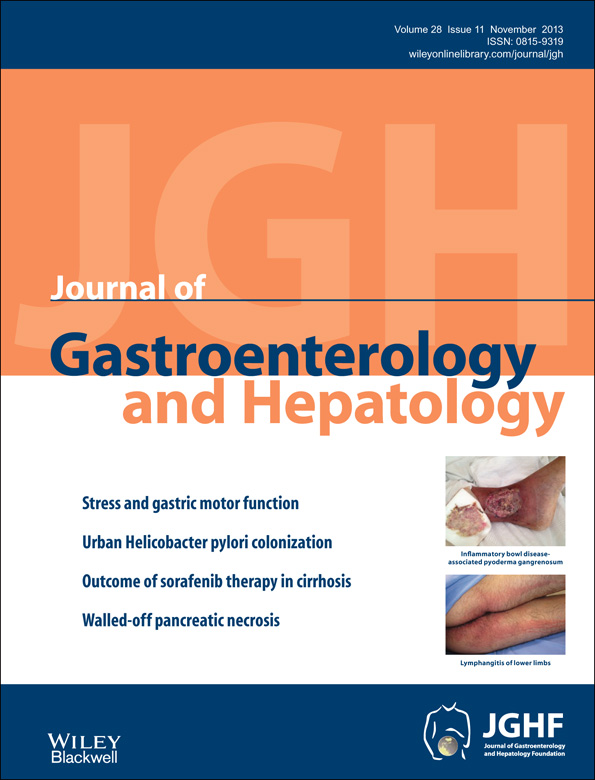Clinicopathologic features of hyperplastic/serrated polyposis syndrome in Japan
Abstract
Background and Aim
Hyperplastic/serrated polyposis syndrome (HPS) is a condition characterized by multiple hyperplastic/serrated colorectal polyps. The risk of colorectal cancer (CRC) is increased in HPS. The clinicopathologic characteristics of HPS in Japanese patients are unknown.
The aim of this study is to clarify the clinicopathologic features of HPS in Japanese patients.
Methods
We retrieved records of patients diagnosed with HPS between April 2008 and March 2011 from the endoscopy database of Hiroshima University Hospital. In addition, we mailed a questionnaire to the hospital's 13 affiliated hospitals in July 2012. Data collected from the database and questionnaires included patient age, sex, number of hyperplastic/serrated polyps and tubular adenomas, size of the largest polyp, polyp location, resection for polyps, coexistence of HPS with CRC, and the diagnostic criterion met.
Results
Of the 73 608 patients who underwent colonoscopy, 10 (0.014%) met the criteria for HPS. The mean age of these patients was 58.3 years, and 6 (60%) were men. No subjects had a first-degree relative with HPS. Four (40%) HPS patients had more than 30 hyperplastic/serrated polyps, and average size of the largest polyp was 19 mm. Three (30%) HPS patients had coexistence of HPS with CRC. In these 3 patients, polyps were observed throughout the colorectum.
Conclusions
Although HPS was a rare condition in the overall study population, patients with the disease may have high risk of CRC. HPS should be diagnosed correctly and followed up carefully.




